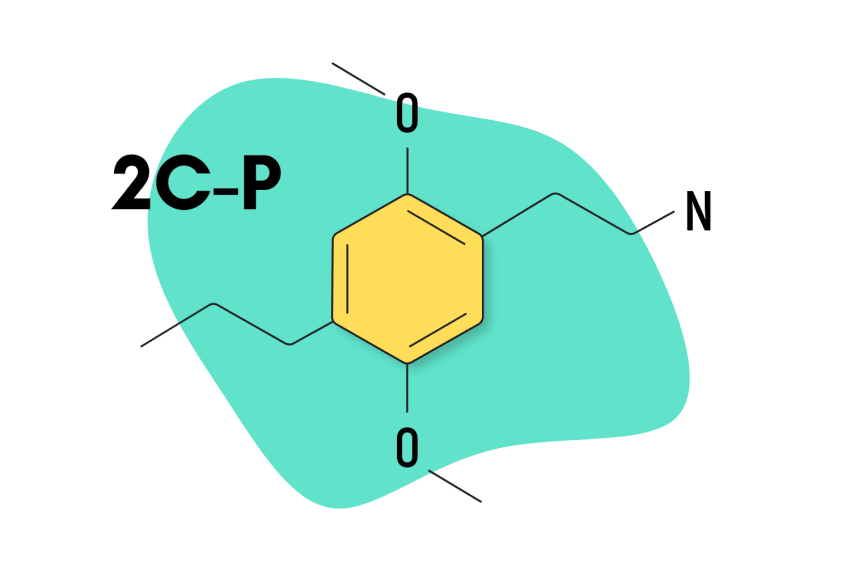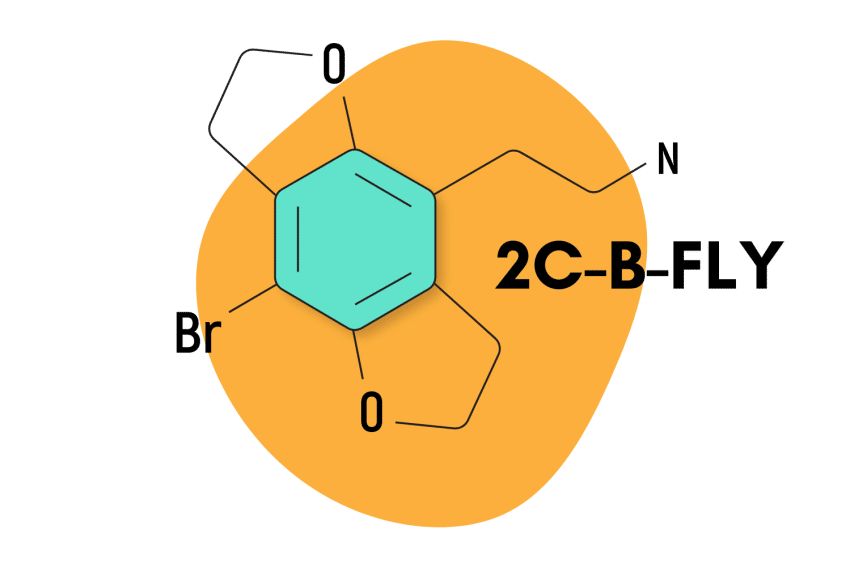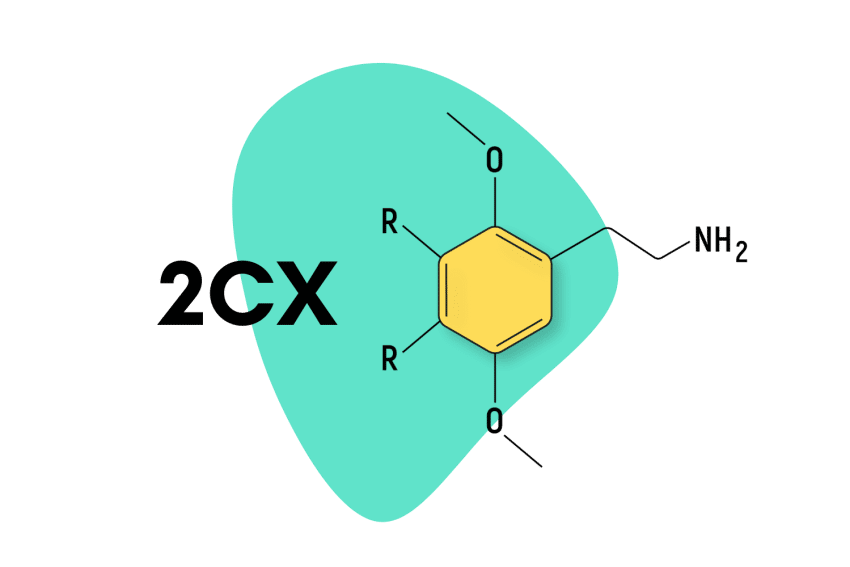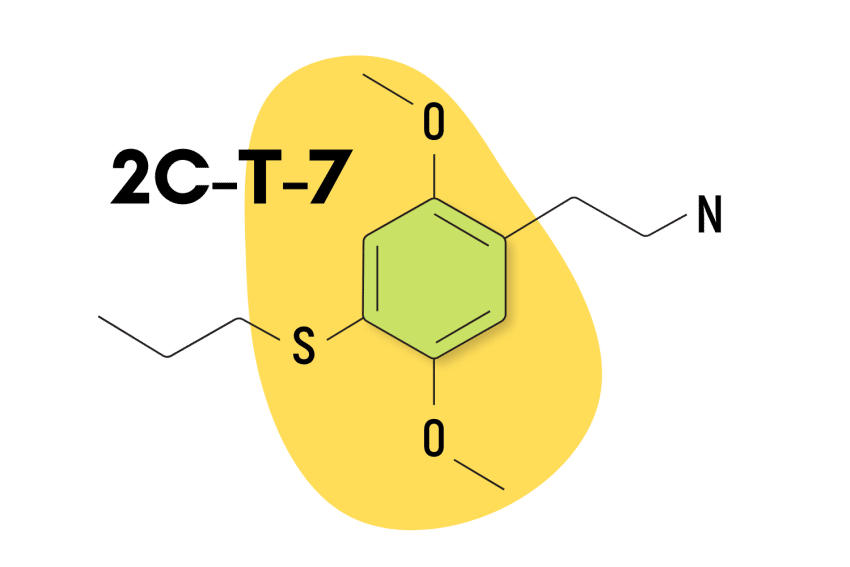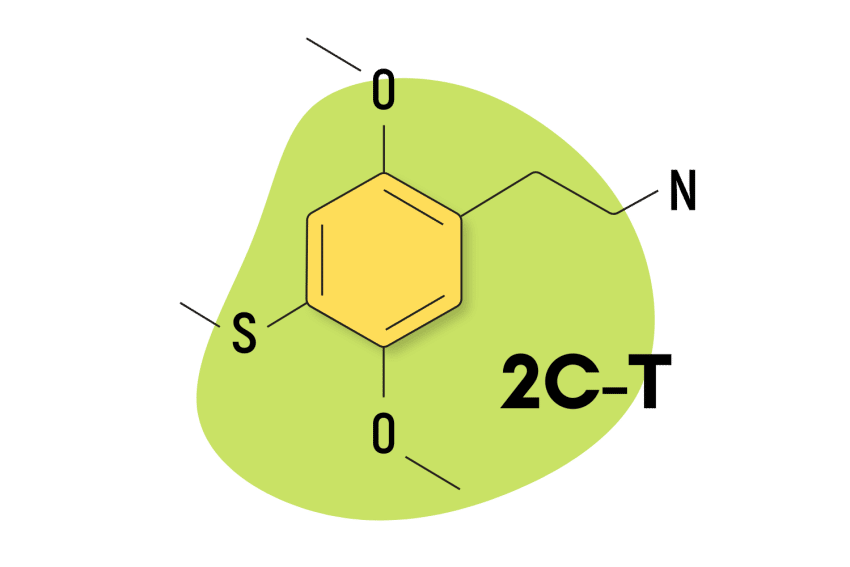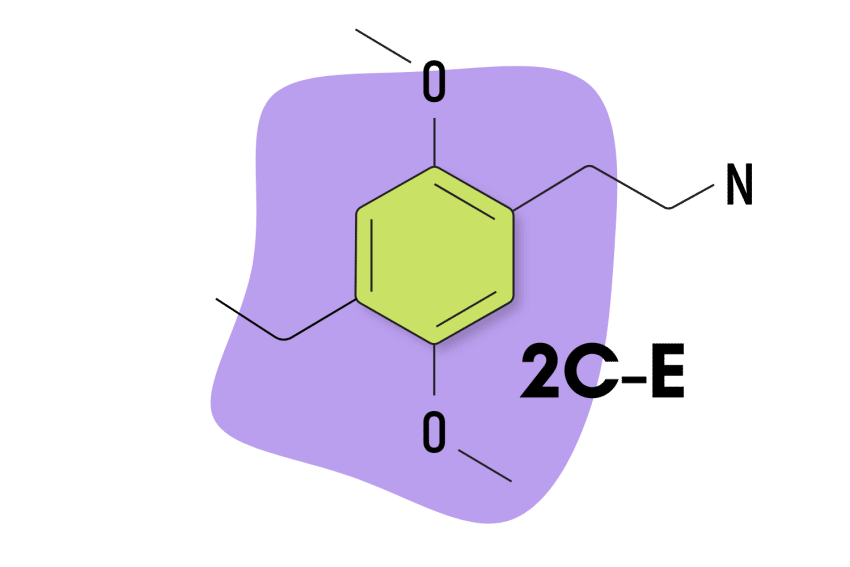2C-C: “Euphoric, Lucid, & Highly Visual”
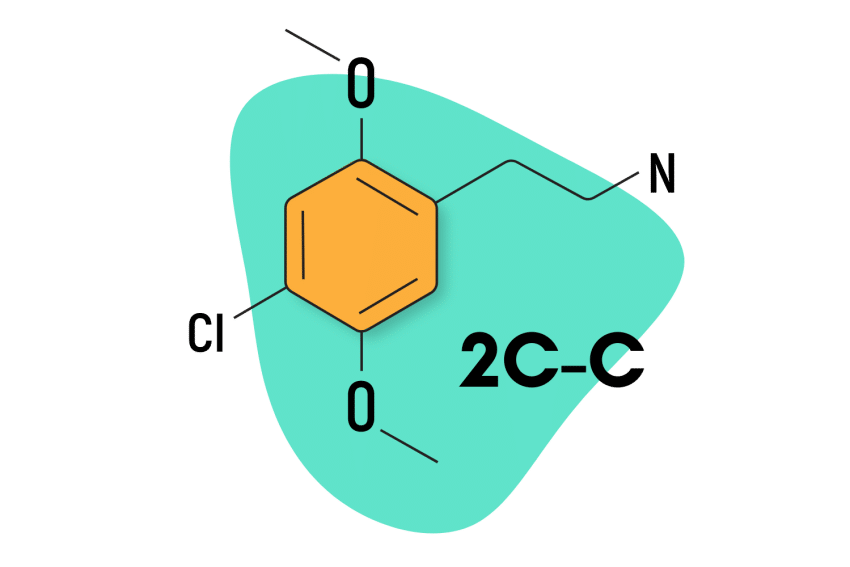
There are thousands of known psychedelic compounds in existence.
Most people have heard of the common ones, such as magic mushrooms (psilocybin), peyote (mescaline), and LSD.
But there exists an entire realm of hundreds of different compounds classified as “research chemicals” that offer entirely distinct experiences.
2C-C is one such compound. It’s most closely related to mescaline but provides its own unique experience.
This compound is loved for its ability to maintain a coherent headspace while still providing euphoric, psychedelic, and empathogenic effects. What makes this compound unique is its notable relaxing (even sedative) effects on the body while maintaining mental alertness and energy.
In this guide, we’ll explore what 2C-C is, how it compares to other psychedelics, and how to practice harm-reduction.
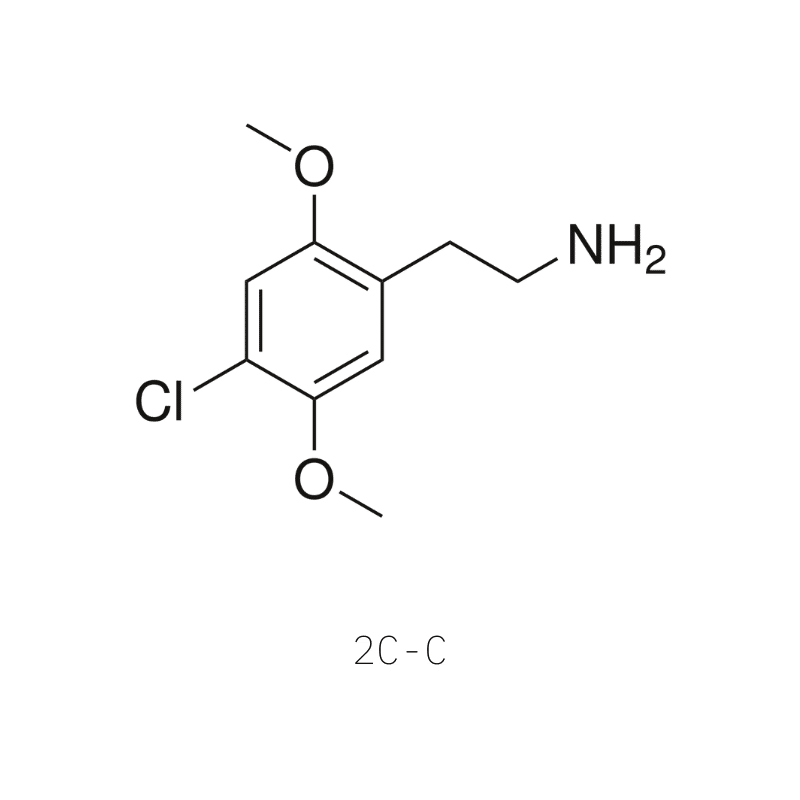
What is 2C-C?
2C-C is a member of the 2C-X family of substances. It’s one of the more well-known members, along with 2C-B and 2C-I.
This compound, along with most 2C-X substances, was discovered by Alice C. Cheng and Neal Castagnoli Jr in 1983. It was later recreated by the late Alexander Shulgin along with hundreds of other compounds as part of his research.
Shulgin, a master chemist, specializing in psychedelic compounds, was exploring the molecular structure of mescaline at the time. He created dozens of mescaline-derived analogs, which he would then test on himself to identify their psychoactive potential.
In his book, PiHKAL, Shulgin reported his experience with 2C-C (40 mg dose) as follows:
“There were a lot of visuals — something that I had noted at lower levels. There seems to be less stimulation than with 2C-B, and in some ways, it’s actually sedating. And yet I was up all night. It was like a very intense form of relaxation”.
This lesser-known psychedelic is hard to find and can be quite expensive. Because of its rarity and high cost, there’s a lot of fake, adulterated 2C-C in circulation. Always test a sample of your 2C-C before you use it.
2C-C: Specs & Technical Details
| Active Ingredient | 2,5-Dimethoxy-4-chlorophenethylamine |
| Level of Risk | Low to Moderate |
| Most Common Side-Effects | Nausea & Sedation |
| Duration of Effects | 4–8 hours |
| Legality | Illegal in most parts of the world |
Guidelines for the Responsible Use of 2C-C
- 🐍 I understand why psychedelics should be treated with respect
- ⚖️ I’m familiar with the laws surrounding psychedelics in my country & state
- 🍄 I’m familiar and confident in the dose I’m taking (dose range for 2C-C is 15–40 mg)
- 🧪 I’ve tested a sample of the substance I’m using with a drug testing kit
- 💊 I’m not mixing any medications or other substances with 2C-C
- 🏔 I’m in a safe & comfortable environment with people I trust
- 🐺 One of the members of my group is responsible and sober (AKA a trip sitter)
- 📆 I have nothing important scheduled for after the trip
- 🧠 I’m in a sound & healthy state of mind
- 🌶 I’m aware of the increased risk of heatstroke & dehydration with this compound
- 📚 I’m familiar with the four pillars of responsible psychedelic use — set, setting, sitter, & substance
- ⏳ Know the timeline — the effects of 2C-C can last between 6 and 8 hours
- 🙅♀️ Know when to avoid stimulants — don’t take 2C-C if you have underlying heart, neurological, or psychiatric disorders
What’s The Dose of 2C-C?
There isn’t a lot of information available on the optimal dose of this substance, and the intensity of the experience can vary a lot from one person to the next. It’s best to start with a very low dose of this compound first and only increase the dose once familiar with how this compound affects the individual user.
The general dosage range of 2C-C is between 20 and 40 mg.
The higher the dose, the more physically sedative it becomes. This sedative action only affects the body and manages to avoid causing mental sedation.
Very high doses (40 mg or higher) are powerfully psychedelic.
Dosage Breakdown for 2C-C
- Threshold Dose — 5 mg
- Standard Psychoactive Dose — 15–40 mg
- Heavy Dose — 40+ mg

What Does 2C-C Feel Like?
The effects of 2C-C are similar to other members of the 2C-X family. It’s euphoric, energizing (in lower doses), and psychedelic. The visual component is milder than most classical psychedelics (such as LSD, psilocybin, or DMT) but can still be quite strong in the higher dosage range.
This compound has a strong body load — causing the body to feel heavy and relaxed. It resembles the effects of a sedative but is less sedating on the mind than most sedatives.
Unlike LSA or Amanita muscaria (two of the most sedating psychedelics known), this compound doesn’t cause the user to fall asleep, but it can make users feel lazy and lethargic. The experience involves a lot of lazing around, feeling euphoric and social, but from a laid-back angle.
2C-C is a good psychedelic to use while hanging out at home, watching a movie, or spending the day at the beach or a park.
With that said, 2C-C, like most 2C-X compounds, can cause an increase in body temperature. Users should be extra careful to avoid heatstroke or dehydration if spending time outdoors.
The key features of 2C-C include:
- Increased laughter and giggling
- A feeling of heaviness or lethargy
- Physical sedation & relaxation
- Mental stimulation & euphoria
- Increased sense of peace & relaxation
- Heightened sense of empathy & connection with others
- Closed & open-eye visuals (especially in higher doses)
- Increased tactile sensitivity
- Reduced appetite
How Long Does 2C-C Last?
Shulgin reported 2C-C is “longer-lived than 2C-B, and there is a longer latency in coming on. It took an hour and a half, or even two hours to get there”.
In total, the experience lasts between 4 and 8 hours, depending on the dose.
How Strong is 2C-C Compared To Other Psychedelics?
2C-C is most comparable to the other 2C-X family of substances, including 2C-B, 2C-E, 2C-P, 2C-I, 2C-B-FLY, and others.
It shares similar changes to visual perception — characterized by color enhancement, visual drifting (objects appear to be melting, breathing, or morphing), cartoon-like visuals, and tracers.
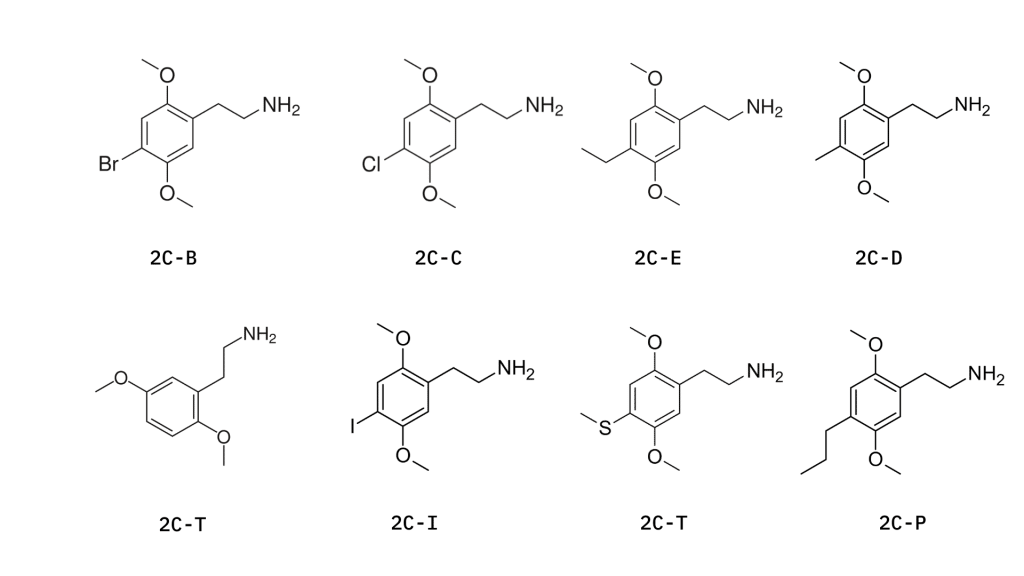
What makes this psychedelic different is its effects on the body. This psychedelic has a strong relaxing effect — making the body feel heavy and relaxed.
Like many 2C-X compounds, headspace remains relatively intact with this substance — users are able to maintain cognitive function and engage in the same activities they would while sober, despite having a heightened sense of euphoria, empathy, and changes in visual perception.
2C-C is a moderate psychedelic in terms of potency. The psychoactive dose range is between 15 and 40 mg. This makes it mildly weaker than 2C-B, 2C-E, and 2C-I, and about half as potent as 2C-P.
For the sake of comparison, here are the dosage ranges of other psychedelics:
- 2C-B — 10–30 mg
- 2C-E — 10–30 mg
- 2C-I — 10–30 mg
- 2C-P — 5–15 mg
- LSD — 0.1–0.15 mg
- Psilocybin — 10 and 25 mg
- Mescaline — 200–300 mg
Is 2C-C Safe?
There’s no indication that 2C-C is particularly dangerous — but also no formal research to conclude it’s entirely safe either. The truth is that we know very little about this psychedelic. The only data we have currently are studies exploring its structure and anecdotal evidence regarding its use.
Some animal studies have found the closely related psychedelic, 2C-B, exhibits neurotoxic effects at doses between 330 and 650 mg (more than ten times the recommended dose) [1].
Testing 2C-C
Testing your substances with a reagent test kit is an essential part of harm reduction and responsible psychedelic use.
This process won’t tell you the exact chemical composition of a substance, but it will help you rule out the presence of dangerous adulterants and indicate whether the substance you have is likely to be what you think it is, rather than something else entirely.
The main substances to rule out are NBOMe compounds, DOMx compounds, cathinones, and opiates.
Learn more: How to test your substances using drug reagent kits.
What to look for when testing 2C-C:
- Marquis — Should turn yellow
- Mecke — Should turn yellow-green
- Mandelin — Should turn orange
- Froehde — Should turn yellow
- Liebermann — Should turn yellow
- Ehrlich — No color change
Side Effects of 2C-C
2C-C is one of the milder 2C-X compounds and is, therefore, less likely to result in side effects than many of the other members of this class.
With that said, there are still some side effects to be aware of when using this substance. The higher the dose used, the more likely there are for side effects to occur.
The potential side effects of 2C-C include:
- Reduced appetite
- Dilated pupils
- Nausea
- Increased body temperature
- Fever or chills
- Confusion or delirium
- Insomnia
- Restlessness
Is 2C-C Legal?
2C-C is illegal in most parts of the world, including the United States, Canada, the United Kingdom, and Australia.
Most countries ban any and all phenethylamine-derivatives, which makes all 2Cx substances illegal.
There are a few municipalities and states that have decriminalized the use of psychedelic compounds, but this isn’t the same as legalization. In decriminalized regions, it’s still illegal to sell 2C-C, and you can still cop a fine if you’re caught with it in your possession.
Related: List of legal psychoactive substances around the world.
Final Thoughts: What’s The Future of 2C-C?
2C-C is an obscure psychedelic — even within the designer drug or research chemical community.
As a member of the 2C-X family of substances, it shares similar effects to more popular options like 2C-B or 2C-I. The main difference is the effects on the body — which are best described as “relaxing and heavy.”
As the general public becomes more interested in the use of psychedelics, it’s likely that more obscure compounds like 2C-C will see increased use as well. However, unless regulators loosen psychedelic restrictions across the board, it’s unlikely we’ll be seeing legal 2C-C in the near future.
For the foreseeable future, it appears 2C-C will remain in obscurity away from the eyes of research and public markets for at least a few more years.
References
- Zwartsen, A., Hondebrink, L., & Westerink, R. H. (2018). Neurotoxicity screening of new psychoactive substances (NPS): Effects on neuronal activity in rat cortical cultures using microelectrode arrays (MEA). Neurotoxicology, 66, 87-97.

